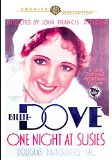| Reviews & Columns |
|
Reviews DVD TV on DVD Blu-ray 4K UHD International DVDs In Theaters Reviews by Studio Video Games Features Collector Series DVDs Easter Egg Database Interviews DVD Talk Radio Feature Articles Columns Anime Talk DVD Savant Horror DVDs The M.O.D. Squad Art House HD Talk Silent DVD
|
DVD Talk Forum |
|
|
| Resources |
|
DVD Price Search Customer Service #'s RCE Info Links |
|
Columns
|
|
|
One Night At Susie's (Warner Archive Collection)
Wobbly, unconvincing early talky melodrama. Warner Bros.' Archive Collection of hard-to-find library and cult titles has released One Night at Susie's, the 1930 First National-Vitaphone Pictures release starring Billie Dove, Douglas Fairbanks, Helen Ware, Tully Marshall, James Crane, Claude Fleming, and John Loder. One of the last projects of "The American Beauty" Dove before her early retirement, One Night at Susie's didn't exactly impress critics back in '30, and for good reason: its drama is slight and scattershot...and more than a little implausible. No extras for this okay fullscreen black and white transfer.
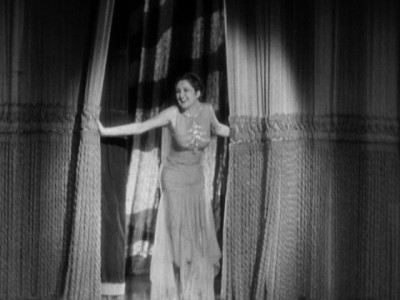
Every mug, no matter what he done, see, gets a square deal at Susie's big house (Helen Ware, grimly one-note). Susie, a self-appointed savior of ne'er-do-wells, as well as mediator and peacemaker among the deadly gangs of New York, takes motherly pride in knowing she raised mobster "Chicago" Pete's son, Dick Rollins to live the straight and narrow (Douglas Fairbanks, Jr., doing okay...with way too much eye makeup). He's a press agent for one of Broadway's biggest theaters, and no two-bit punk with a gat or some chorine floozy with a sadder-but-wiser look in her eye, is going to derail Dick, who now longs to be a playwright. Enter Mary Martin, beautiful chorus girl and Dick's fiance (Billie Dove, gorgeous and effective, despite the cornball set-up). Susie hits the roof, but what can she do except tear into Mary when Dick isn't around, telling her exactly what she thinks of "beautiful, soft, and useless" girls like her, who "don't have to give," but only take. Other men have their eyes on knockout Mary, too, including sly, manipulative producer Hayes (John Loder, hilariously epicene), and his hired private dick, Houlihan (James Crane, getting the nasty tone right), both of whom see Mary as little more than a pretty thing waiting to be taken advantage of...in the worst way. When Hayes tries just that one night at his penthouse, Mary plugs him, prompting Dick to take the rap for his sweetheart. Now with plenty of time (8 years) in prison to write that new play, all he needs to stay sane is to have Mary sell his work and make Mary a big star, which she does...by f****** (how coarse) David Drake, a big-shot producer (Claude Fleming). So...what's going to happen when an oblivious Dick finally gets out of the joint?
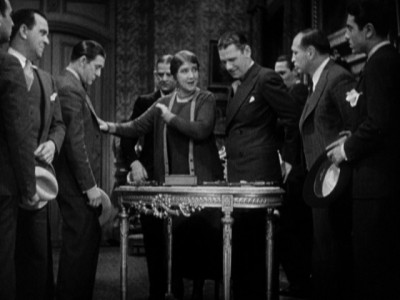
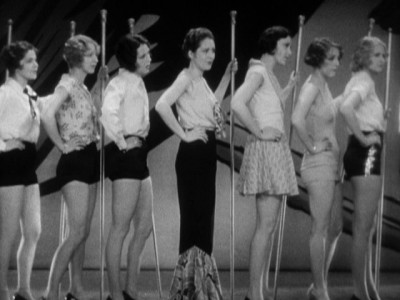
From what I can gather, the critics weren't kind to One Night at Susie's when it bowed in the fall of 1930, nor was it a success with its Depression-era audiences. Its melodramatic, cliched storyline already considered passe at this early juncture in the gangster and backstage drama genres, One Night at Susie's was another indication that the popularity of Billie Dove's movies--she being one of the top movie stars of the 1920s--had already peaked with her dwindling legion of fans. And it's not hard to see why today. Yes, those interested in seeing some glimpses of pre-Code license may be intrigued by One Night at Susie's' open acknowledgement of sex-for-advancement in the theatre world (the only way Dick's play is ever going to get produced is when Mary decides to "gives it up" to producer Drake)--as well as the persistent threat of sexual violence for women who won't comply (certainly Mary's near-rape by producer Hayes, as well as creepy Houlihan's frequent warnings to her that, one way or another, she'll succumb to him: "I always finish what I start--time is, you're going to beg me to be nice to you!"). As well, Mary isn't "punished" at the end of the movie for her exchange of sexual favors: she's reunited with her fiance, with no lingering accusations or guilt to follow (while producer Drake gets off scot-free)--a happy ending that certainly wouldn't have been allowed on Hollywood screens in just a few short years.
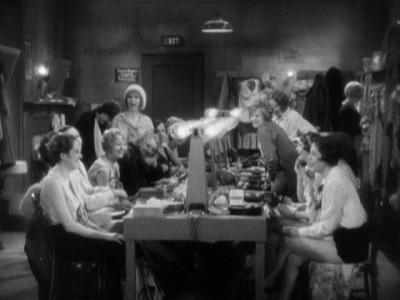
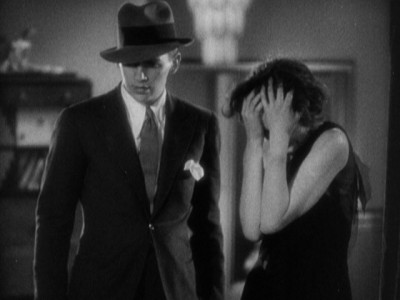
Unfortunately, that brief sexual subtext is the only mildly intriguing thematic element of One Night at Susie's; everything else is just heavy-handed melodramatic tripe. Scripted by Forrest Halsey (The Divine Lady, The Furies) and Kathryn Scola (Baby Face, Alexander's Ragtime Band, The Constant Nymph), from a Liberty magazine short story by Frederick Hazlitt Brennan, One Night at Susie's' set-up is, frankly, ridiculous. How else would you describe that patently phony Damon Runyonesque crap of remorseless killers turned into shuffle-footed softies the minute stern, maternal Susie wags her bony finger at them? Who is Susie, anyway, that she has the equivalent powers of a mafia don, calling together rival gangs and cowing them like cheap punks, with the warning of her squealing to the cops if they don't amicably settle their scores (as if that threat right there wouldn't get dear old Susie ventilated on the spot)? And what "right" is she imposing, as the opening title card states, that's used against a "wrong?" She gives killers and criminals a place away from the cops to safely meet, or to get a shower and a meal when they're on the lam, but I don't hear about anybody going straight...and that somehow is doing "right" (and come to think of it: wouldn't the cops just open up shop right outside her house?)?

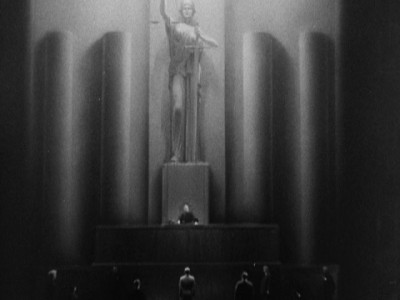
Equally goofy is her moral opposition to Mary; apparently, Susie would rather hang out with killers than have an obviously sweet, pretty chorus girl like Mary marry her precious Dick. At first her rant against Mary sounds like the jealous barkings of a plain, ugly, older woman lamenting life's easy pathway for attractive women--the ones who snag "chumps" who keep them "beautiful, soft, and useless." She grumbles that beautiful women don't really get a break in life, because the biggest part of loving is giving...which pretty girls don't have to do: they only take, according to Susie. As cliched and silly as that bemoaning is, what is one to make of Susie's further assertion that those "chumps" keep pretty girls from seeing the "dirty" side of life? Susie's whole bag is the "dirty" side of life, isn't it, and it's populated with killers who seem more like rambunctious boy scouts living within a code of honor and honesty. So that side of life is okay for Susie, and respectable...but pretty girls are somehow kept from it? Didn't Susie keep her foster son Dick away from that life? None of this makes any sense. And don't even get me started on our heroine, Mary, who blithely lets her fiance take an eight year prison rap in Sing Sing, no less, for her own crime of murder--a crime of self-defense for which she would more than likely have gotten off from, due to being raped (or almost raped--the movie doesn't make it clear).
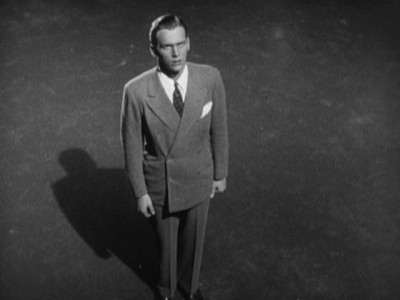
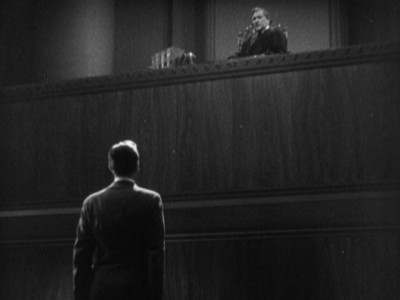
If we don't buy into the validity of Susie's criminal underground world, and we don't believe the central set-up of Dick taking Mary's place in prison, and we don't actually like Mary or Susie for the choices they make in life, then it doesn't matter in One Night at Susie's that director John Francis Dillon handles everything in an agreeably smooth, anonymous fashion, or that with the help of cinematographer Ernest Haller, he creates a couple of rather stunning scenes (that German Expressionist courtroom sequence is startlingly shot--as well as wildly out-of-place with the rest of the movie's mise-en-scene--while a simple elevator shot of Fairbanks, Jr. riding to the top of Loder's penthouse, becomes a marvel of matte work and dissolves: I watched this several times and I still can't quite figure out how they achieved the effect). That assured vibe and a few visual flourishes--along with Dove's and Fairbanks, Jr. 's nice performances--aren't nearly enough to paper over the basic gimcrackery of One Night at Susie's' central set-ups.
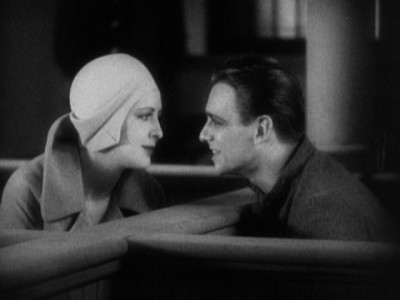
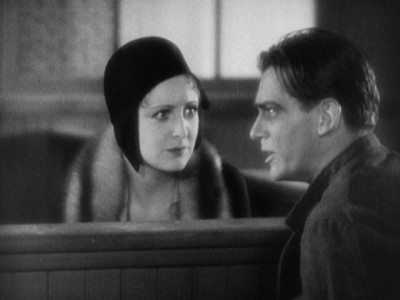
The Video:
The fullscreen, 1.33:1 black and white transfer for One Night at Susie's is about what you'd expect for a title from this time period: grainy, contrasty at times, a medium-sharp image, and with the usual level of imperfections (scratches and dirt).
The Audio:
Those Vitaphone waxes were sure scratchy. The Dolby Digital English mono audio track has a lot of hiss and warble, but it's been re-recorded at a decent level, at least. No subtitles or closed-captions available.
The Extras:
No extras for One Night at Susie's.
Final Thoughts:
A very silly melodrama. Part gangster saga, part Broadway backstage intrigue, part romance, and part prison picture, One Night at Susie's can't make up its mind what it wants to be. But judging each of these insincere, cliched, and sometimes downright goofy elements on their own...I doubt that if One Night at Susie's had settled on one storyline, that it would have been successful, anyway. I'm tempted to rate One Night at Susie's a rental, just to see legendary Billie Dove (since so much of her work is now lost)...but unless you're a big, big fan of early talkies and/or of her, you can safely skip One Night at Susie's.
Paul Mavis is an internationally published movie and television historian, a member of the Online Film Critics Society, and the author of The Espionage Filmography.


|
| Popular Reviews |
| Sponsored Links |
|
|
| Sponsored Links |
|
|
| Release List | Reviews | Shop | Newsletter | Forum | DVD Giveaways | Blu-Ray | Advertise |
|
Copyright 2024 DVDTalk.com All Rights Reserved. Legal Info, Privacy Policy, Terms of Use,
Manage Preferences,
Your Privacy Choices | |||||||









